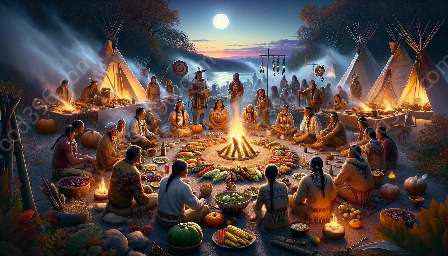Native American regional cuisines reflect the diverse environments and cultures of indigenous peoples across North and South America. The rich history of Native American cuisine has had a profound impact on the development of culinary traditions in the Western Hemisphere.
Before delving into the distinct regional cuisines of Native American cultures, it is essential to understand the historical significance of Native American cuisine and its influence on global culinary history.
Native American Cuisine History
The history of Native American cuisine is deeply intertwined with the traditions, beliefs, and practices of indigenous peoples. For thousands of years, Native American communities have cultivated a deep connection to the land, honoring and respecting natural resources while developing unique culinary techniques and ingredients.
The arrival of European settlers in the Americas led to significant changes in Native American food practices. The introduction of new crops, animals, and cooking methods reshaped indigenous culinary traditions, creating a fusion of Native American and European influences.
Despite centuries of cultural assimilation and displacement, Native American cuisine has persisted as a vital part of the culinary landscape, with a resurgence of interest in tribal foodways and a growing movement emphasizing indigenous recipes, ingredients, and cooking techniques.
Cuisine History
Cuisine history encompasses the evolution, diversity, and cultural significance of food and cooking practices throughout human civilization. The study of cuisine history enables us to understand how food has shaped societies, economies, and cultural identities over time. Native American regional cuisines represent a key component of cuisine history, offering insights into the unique culinary traditions and innovations of indigenous communities.
North American Regional Cuisines
Pacific Northwest
The Pacific Northwest region, which includes present-day Washington, Oregon, and British Columbia, boasts a diverse and bountiful culinary heritage. Native American tribes such as the Chinook, Tlingit, and Coast Salish have traditionally relied on salmon, shellfish, wild game, and an abundance of berries and roots as staple food sources. The distinct flavors of cedar, juniper, and other aromatic plants contribute to the region's iconic dishes, such as salmon cooked on cedar planks and flavorful stews seasoned with locally foraged herbs.
Southwest
The Southwest region, home to tribes like the Navajo, Hopi, and Pueblo, features a cuisine characterized by the use of corn, beans, and chili peppers. Traditional cooking methods such as pit-roasting and stone grinding are integral to crafting indigenous dishes like blue corn mush, Navajo fry bread, and green chile stew. The blend of earthy flavors and vibrant spices reflects the rich agricultural heritage and cultural traditions of the Southwest Native American tribes.
Great Plains
The Great Plains region, inhabited by tribes including the Lakota, Dakota, and Blackfeet, showcases a cuisine centered around buffalo, wild game, and foraged wild plants. The art of curing and smoking meats, as well as the use of dried berries and wild herbs, define the culinary repertoire of the Great Plains tribes. Bannock, a type of flatbread, and pemmican, a concentrated mixture of dried meat, fat, and berries, are emblematic dishes that embody the resourcefulness and ingenuity of Great Plains cuisine.
South American Regional Cuisines
Amazon Rainforest
The Indigenous peoples of the Amazon Rainforest, including the Tukano, Tikuna, and Yanomami, have cultivated a diverse and sustainable culinary tradition rooted in the surrounding ecosystem. Wild fruits, freshwater fish, palm hearts, and cassava form the foundation of Amazonian cuisine, with unique cooking techniques such as baking foods in banana leaves and utilizing natural toxins to prepare certain dishes. The intricate flavors and innovative food practices of Amazonian tribes exemplify the harmonious relationship between indigenous communities and the natural environment.
Andes Mountains
The Andes Mountains region, home to indigenous groups like the Quechua, Aymara, and Mapuche, showcases a cuisine shaped by high-altitude agriculture and centuries-old cultivation techniques. Potatoes, quinoa, and llama meat are staples in Andean cooking, accompanied by flavorful marinades and hearty stews. Indigenous food preservation methods like freeze-drying and fermentation have contributed to the enduring sustainability and nutritional value of Andean cuisine.
Patagonia
The Patagonian region, inhabited by tribes such as the Tehuelche and Selk'nam, features a cuisine emblematic of the harsh, windswept landscape and the reliance on wild game and seafood. Roasting and smoking techniques, combined with the use of native herbs and berries, impart distinct flavors to traditional dishes such as guanaco meat stew and shellfish ceviche. The resourcefulness and resilience of Patagonian tribes are reflected in their innovative culinary practices and creative use of local ingredients.
Conclusion
Native American regional cuisines represent a rich tapestry of culinary diversity, history, and cultural significance. From the Pacific Northwest to the Patagonian wilderness, indigenous food traditions showcase the profound connection between Native American communities and their natural environments. As we continue to appreciate and celebrate the legacy of Native American cuisine, it is essential to honor the ancestral knowledge, traditions, and contributions of indigenous peoples to the global culinary mosaic.

